
At 100% Optical, Aberdeen-based Caledonian Optical was showing off its new £1.5m lab through a tour of the lab via virtual reality headsets. The extensive space at the new premises meant Caledonian Optical, part of the Duncan and Todd Group, significantly increased capacity while optimising manufacturing processes and workflow.
‘The warehouse space was completely empty when we moved in,’ said Mark Robertson, head of manufacturing at Caledonian Optical. ‘It was great having the blank canvas of a new lab space and being able to design the lab exactly as I wanted it. The important thing is that the work flows naturally through the lab in the correct order. We’ve also got plenty of space for future expansion if we want to put in more machines too.’
Robertson also noted that the move has allowed the lab to make significant strides in sustainability.
‘Another good thing for us is that the new building gives us the opportunity to become more sustainable,’ said Robertson. ‘The system includes a micro-separator machine into which all wastewater is pumped. The machine then separates out the water from the swarf, so you have the dry waste separate. This means 70% less waste going into landfill and the water is recycled and goes back into the production system. Even the lighting in the building is all LED with sensors, so the lights go off when an area is not in use. The building has a huge roof, so solar panels are the next thing to think about. We’ve got lots of opportunities to grow and become more energy efficient as we do.
‘Sustainability is important to us and it is important to practices and patients too. We do our manufacturing in the UK and we make everything in-house, so we don’t have a huge carbon footprint from flying lenses in from overseas.’
On the product side, Caledonian was launching its myopia management lens, Imperium, at the show. ‘Myopia has obviously been very prominent in optics over the past couple of years and our customers have been asking if we have a solution for myopia management,’ said Robertson. ‘We’ve got the design and it has clinical trials behind it, which is very important. It is fantastic the effect that a product like Imperium can have. My current prescription is -6.00D and I might have been a -3.00D if this had been available when I was a kid.’
Imperium is based on a design from ophthalmic lens technology company IOT and works via peripheral defocus with the vertical meridian providing the prescribed power and positive spherical power introduced in the periphery along the horizontal meridian.
‘From a manufacturing perspective, it is the same sort of process as our other digital lenses, so it is very familiar territory to us,’ said Robertson. ‘It’s more about the training to customers to then convey the information on to the patients. The lens is just one part of it. There are lifestyle changes that should be implemented alongside it. You don’t want a patient to think it’s simply a matter of wearing the lens. You must educate them on how it all works together. Getting it into the Duncan and Todd stores, as well as our independent practice client base, means lots of children will be able to access Imperium and have the trajectory of their myopia progression changed for the better.’
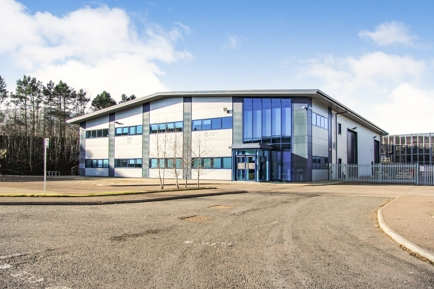
Optimum results
The Optimum RX Group launched its own myopia management lens based on a design from IOT at the show.
‘OptiMyope provides a clear central area for a stable prescription and a progressive increase in the horizontal meridian that creates a hyperopic defocus,’ said Mark Marland, sales director at Optimum RX Group. ‘We are doing a frame and lens package for OptiMyope, whereby, if you purchase OptiMyope in a Planet Pop frame, you do not pay for the frame. This option makes the lens more accessible to the children who need it.’
OptiMyope is available in a range of materials (1.5, Trivex, polycarbonate, 1.6, 1.67 and 1.74), and is compatible with Optimum’s coating range, including the company’s second launch at the show, new coating called OptiPure+.
‘We’ve got our new OptiPure+ coating at the show too,’ said Marland. ‘It has an enhanced scratch resistance. It is an achromatic coating with a slight blue hue to it. The high scratch resistance is combined with the ability to reduce surface reflections to less than 1%. Other benefits include being easy to clean, increased light transmittance and improved aesthetics.’
Optimum was also promoting the specialty lens work that has been the bedrock of the company’s business in recent years. ‘The interest in our complex lenses capability just keeps growing and growing,’ said Marland. ‘It is the weird and wonderful stuff that can’t be made everywhere. We can do it through the expertise of our staff and investment in equipment. Our product guide is a great companion for a dispensing optician with a challenging prescription to fit.’

Essilor’s premium progressive
Essilor was on an appropriately mammoth stand at the Excel as part of Essilor-Luxottica. For the lens section of the optical giant, Essilor was trailing its new Varilux XR lens, which will be officially launched in May.
‘This year we are presenting a new premium progressive lens right at the top of the range, Varilux XR series,’ said Alan Pitcher, commercial director at Essilor. ‘The actual launch event will take place in May of this year, but we are able to share some details. The lens is the result of a sizable research and development project, in which we’ve really focused on the data that we have as a business. We’ve taken over a million pieces of data collected from around the world and, for the first time in the design of a Varilux optical surface, we have used the power of artificial intelligence (AI) to anticipate visual behaviour. This has created a lens that will provide clear vision but also provide a better solution to individuals when they are in motion.
‘We think the new generation of progressive wearers that are coming through will expect their lenses to cope with a more dynamic lifestyle with different postures and positions. People often talk about these issues, and for presbyopes who choose Varilux XR series, they are guaranteed to benefit from instant visual sharpness and better responsiveness in motion.'
An additional offering launching in 2023 was Eyezen Start Stock, a stock version of the enduring Eyezen optimised single vision lens range.
‘Eyezen is not a new brand and has, for a number of years, provided a premium solution in competition with a standard single vision lens,’ said Pitcher. ‘Now, we are in a position to offer this as a stock option, Eyezen Start Stock, which was introduced to the market at the start of February.
‘Eyezen is a modern solution to modern problems. If you look at a standard single vision lens, it’s a historic solution and we would like to claim our proprietary research and development effort has delivered a lens that is better able to accommodate daily life. Having Eyezen Start available as a stock lens offers a cost-effective single vision solution for those who don’t necessarily want a premium bespoke lens, but need all the benefits and visual comfort that come with this innovative lens design.’
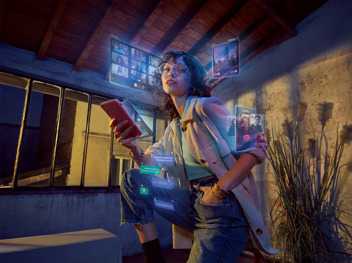
Eyezen Start stock is available in Orma 1.5 and Ormix 1.6 with Blue UV Capture and Crizal Sapphire HR as standard.
Nikon happy hours
As sponsors of the Independent Studio Bar, Nikon hosted happy hours across the three days of 100% for the independent practice community. Meanwhile, on its stand, the company launched two new products.
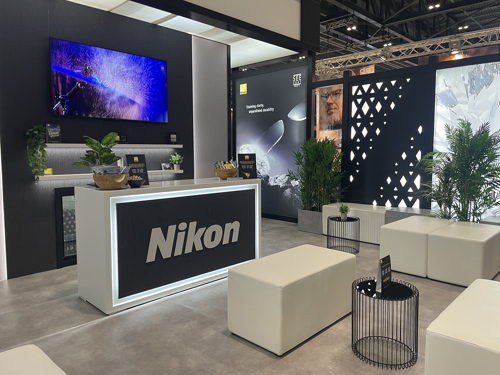
‘One of the innovations is SeeCoat Next, which is the latest addition to our premium lens coating portfolio and our new flagship coating,’ said Takeyasu Hirose, director of global marketing and business development at Nikon Lenswear. ‘It is a global product that we are bringing to the UK seven years after the previous innovation the SeeCoat Plus, during which time we have been busy researching and developing improvements. With this new coating, we have really focused on two major improvements that are both directly linked to areas that consumers are very conscious of; scratch-resistance and smudge-resistance. SeeCoat Next is at least twice as scratch-resistant and twice as smudge-resistant as its predecessor.’
Hirose noted that the Nikon research and development team’s creation of its own test protocol was pivotal in achieving enhanced performance.
‘The test protocol was designed to more accurately mirror how consumers actually wipe their lenses,’ said Hirose. ‘Micro-scratches are often made to lenses during the cleaning procedure, so the two things are linked. If you can reduce smudging, lenses will need to be cleaned less frequently and fewer scratches will be made.’
The hydrophobic smudge resistant topcoat has double the durability of the SeeCoat Plus version and now its lifespan goes beyond the average renewal cycle for a pair of lenses.
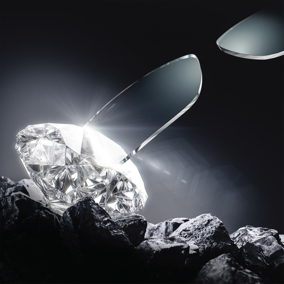
‘It’s the way the topcoat is bonded with the rest of the coating that makes it last much longer,’ noted Isabelle Abrieux,
commercial and marketing director at Nikon Lenswear UK. ‘For the anti-scratch resistance, having an extra strong scratch-resistant layer on the front of the lens allows us to prevent micro-scratches. We’ve realised that micro-scratches reduce transmission of light over time and this coating will allow lenses to be much more efficient two or three years after being dispensed.’
‘Everyday wear and tear takes a toll on lenses but so does cleaning,’ added Amy Baig, head of education and professional services at Nikon Lenswear UK. ‘Every time you clean the lens, you’re taking that microscopic layer away, which then reduces the smudge-resistance properties, which means you clean your lenses more. So, it’s a vicious cycle that we are breaking with this product.’
The second product launched by Nikon at the show was Pure Blue UV, a new lens that offers enhanced protection against UV and blue light that can be combined with SeeCoat Next.
‘Pure Blue UV is a new chroma category,’ said Abrieux. ‘It’s an upgrade from a clear lens. The advantage of Pure Blue UV is that it offers UV 400 protection on all indices, including 1.5 index, and additional blue light protection as well.’
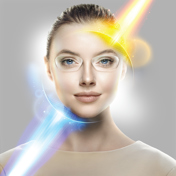
‘With Pure Blue UV, you’ve got effectively full sunglass-level protection outside in your clear lens, as well as the comfort that you get indoors,’ said Baig. ‘We believe the way forward for premium independent opticians is to move patients from clear lenses into Pure Blue UV.’
Hirose noted that the product is not purpose specific but is rather for everybody and every day.
‘Nikon has a bit of a history with the blue light sector,’ said Hirose. ‘We were the very first to launch a product back in 2011. Now, if you look at the global statistics, around 18% of the total lenses sold in the market use blue light coatings, and it all started with a Nikon initiative. With Pure Blue UV, we wanted to really look at the cosmetic side as the average blue light cut lens suffers from a blue reflection or a residual yellowish colour. We’ve made Pure Blue UV as close as possible to a clear lens. As a matter of fact, we carried out an extensive study in which almost nine out of 10 consumers said they would consider it a clear lens.’
In additional activity at the show, Nikon launched its new Facebook and Instagram social media channels (@NikonLenswearUK), which are designed to drive traffic to its independent clients. The company also shared its ‘Details Unveiled’ consumer campaign that will use augmented reality filters to engage users via their mobile phones.



